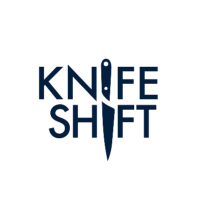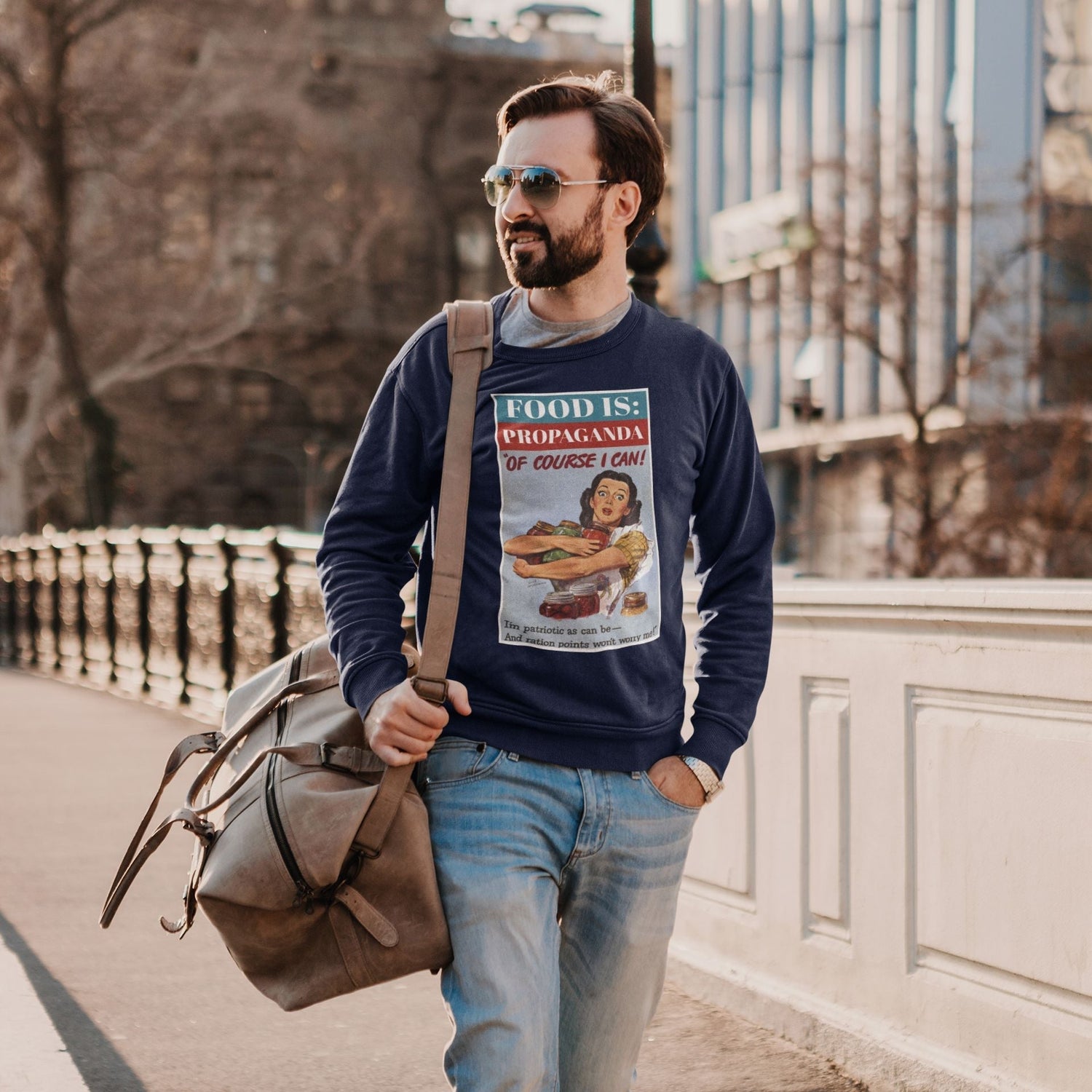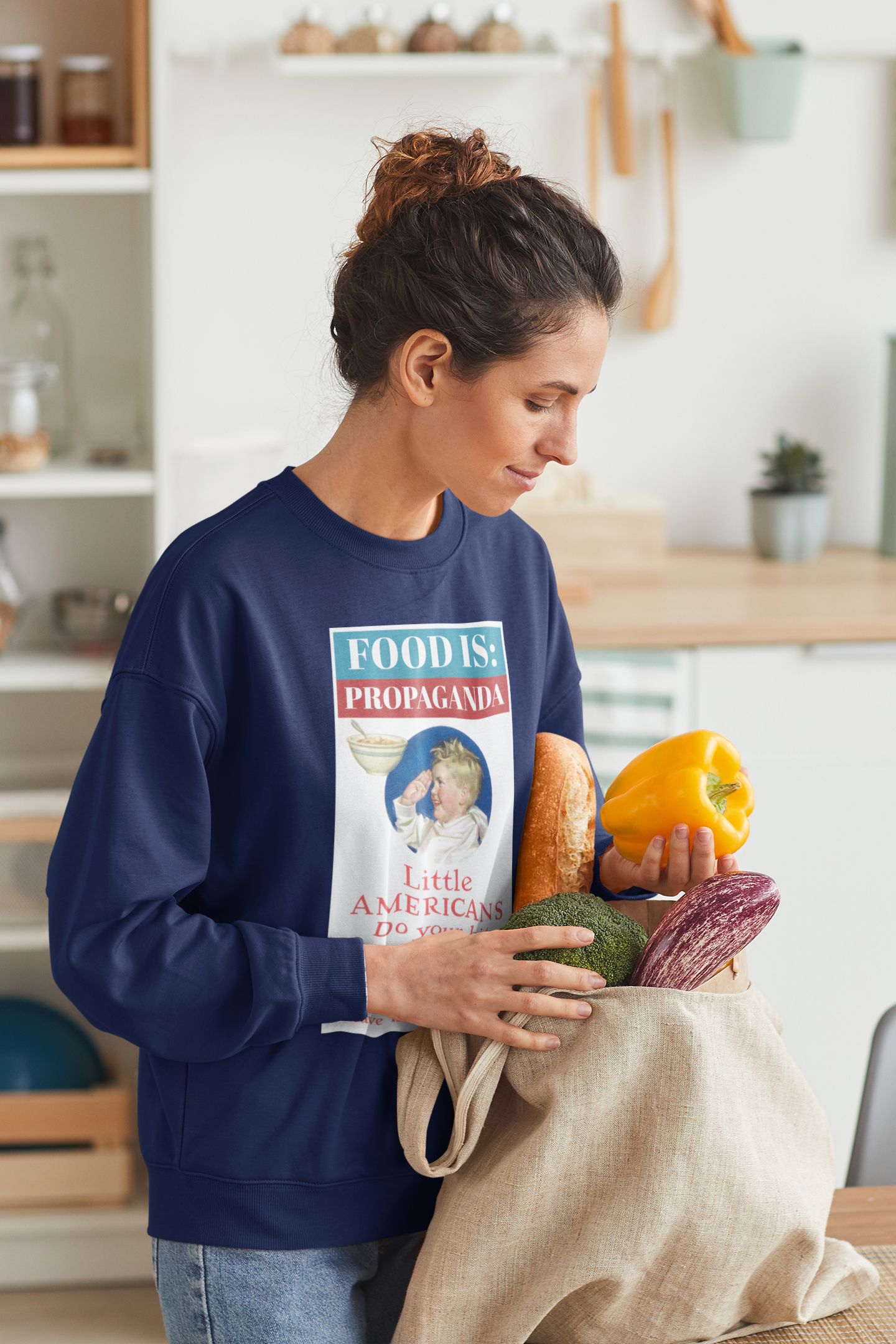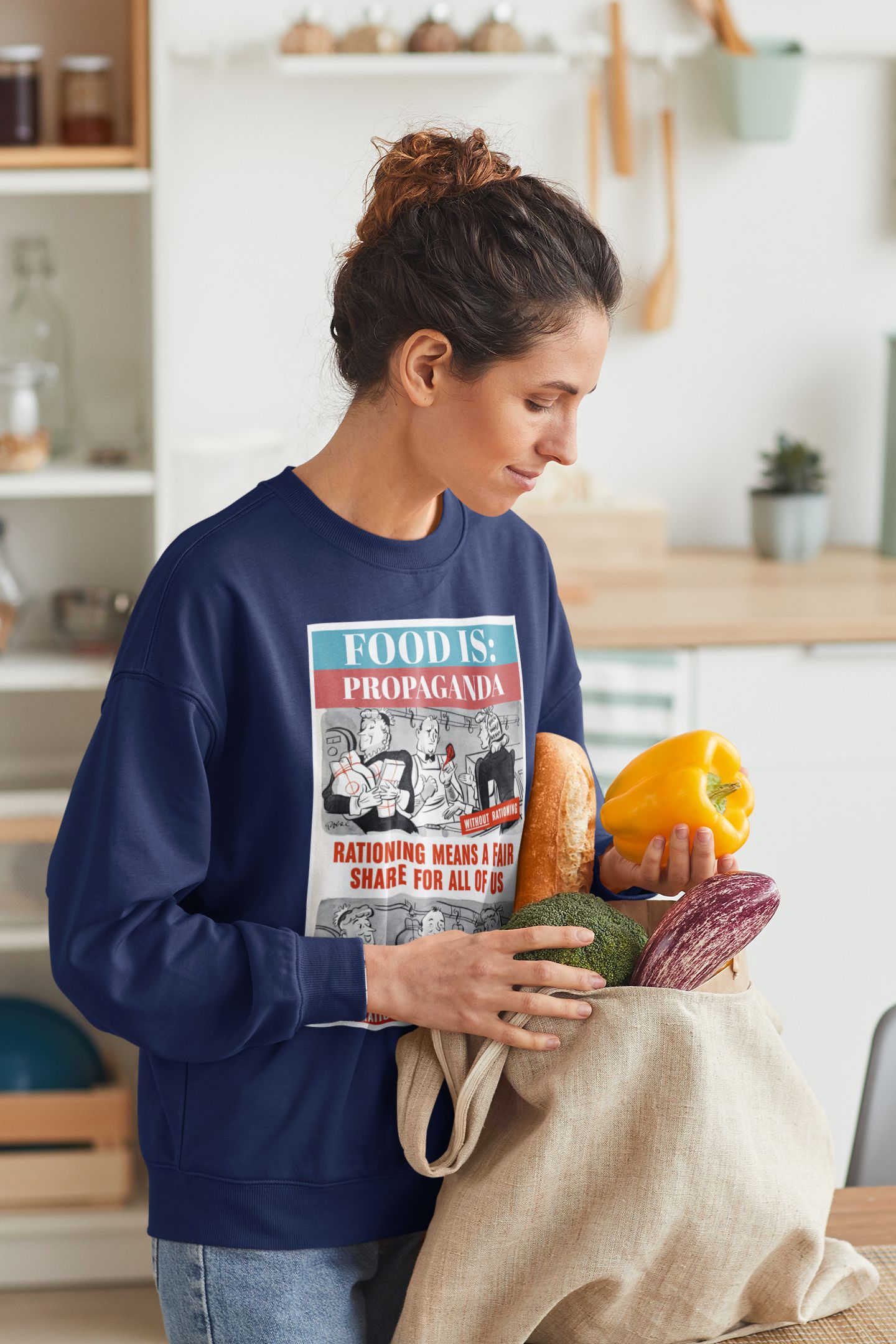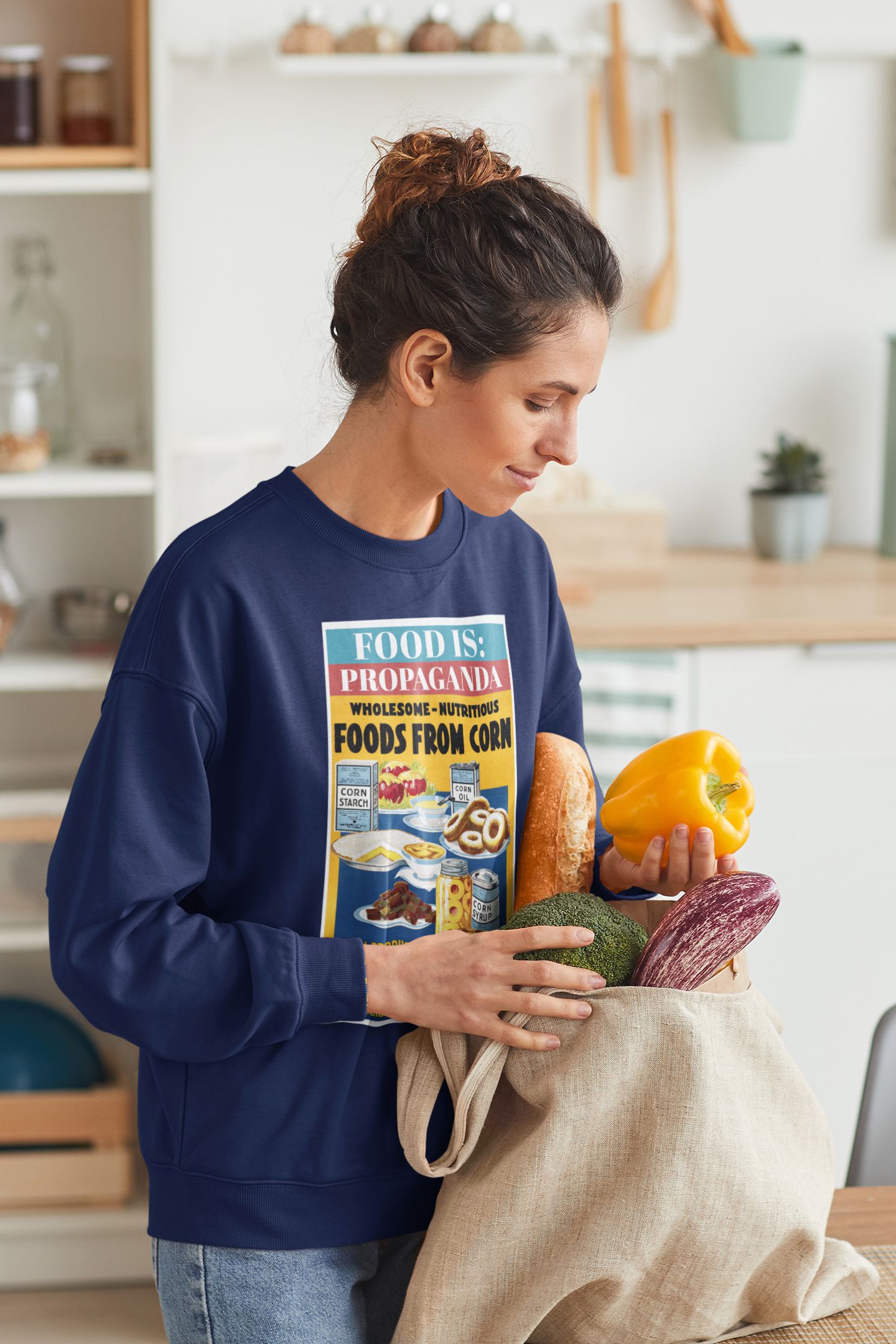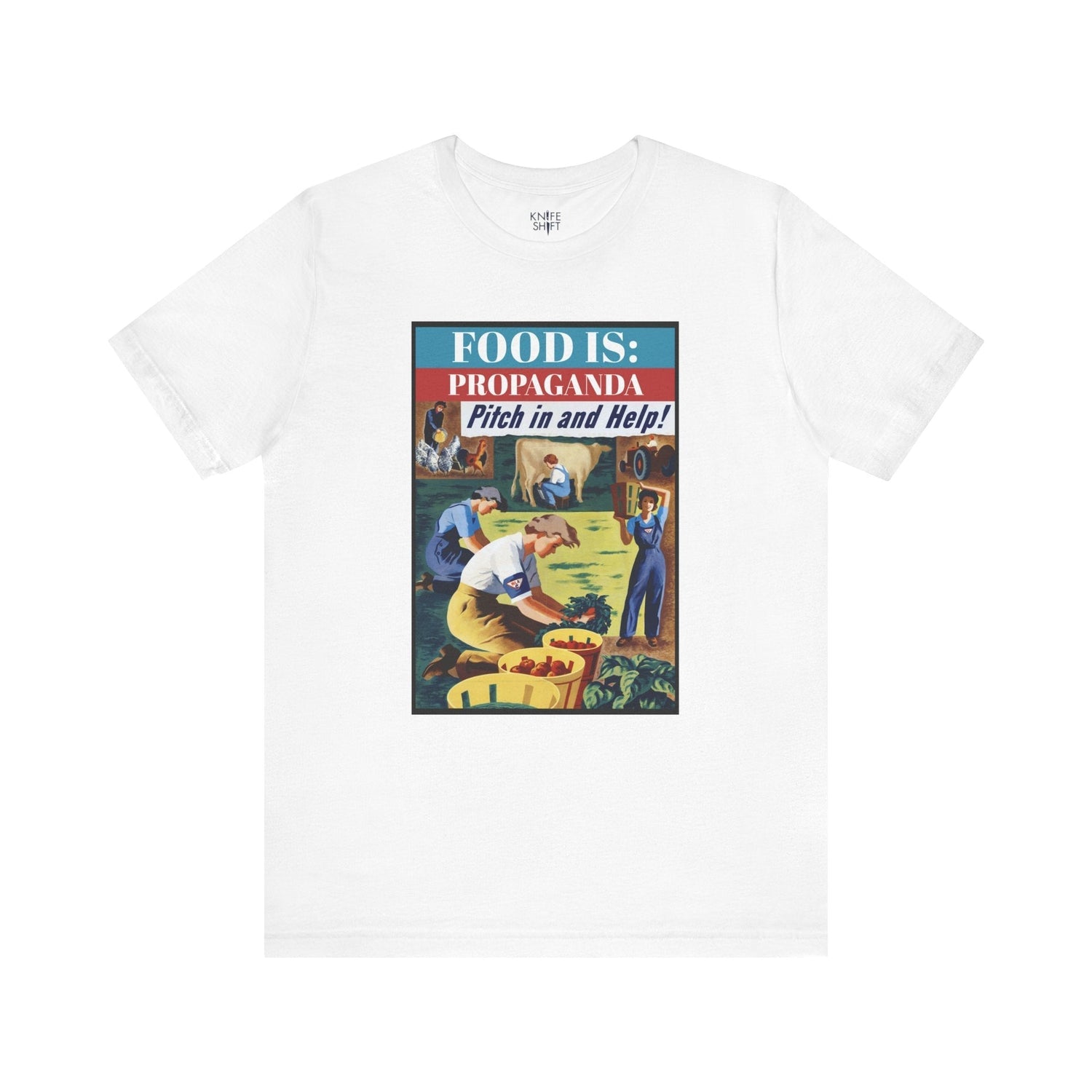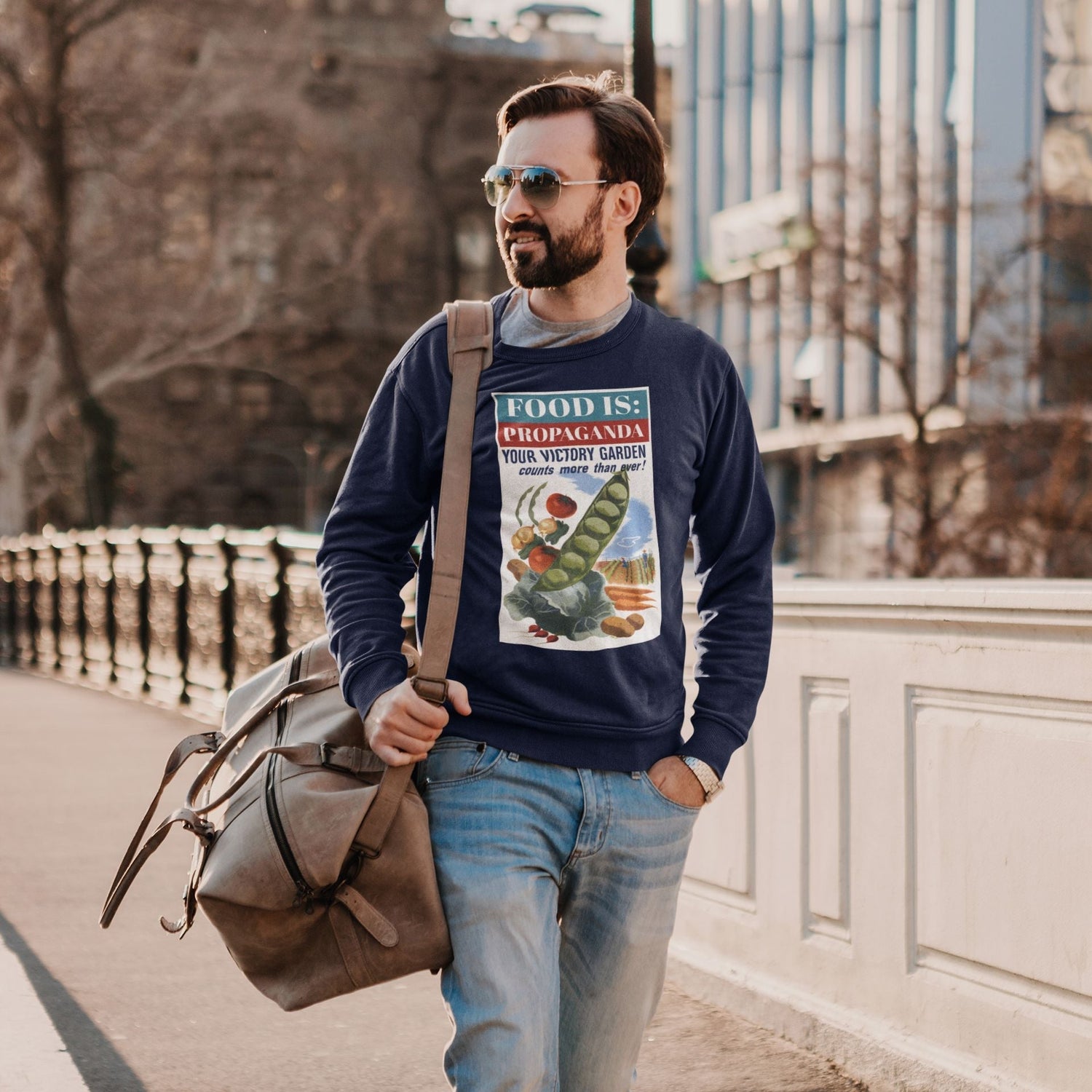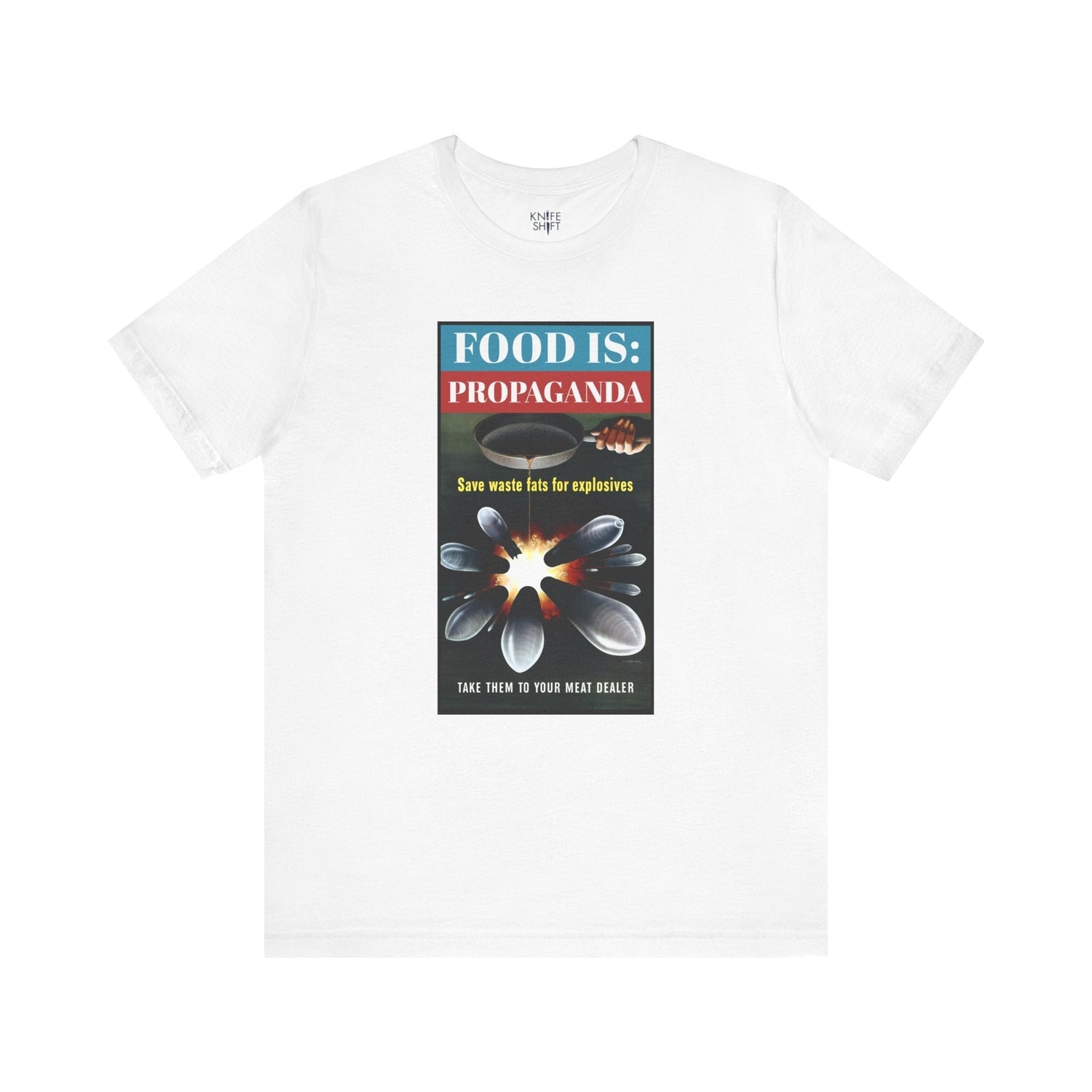Sort by:
26 products
26 products
About the Artwork:
Dick Williams (1908-1981) was an American commercial illustrator whose work flourished during the mid-20th century. While details about his career are somewhat scarce, his contributions to the war effort stand out. Williams created illustrations for various publications, but his impactful posters for the U.S. Department of Agriculture (USDA) like "Of Course I Can!" played a vital role in boosting morale and promoting resourcefulness on the home front during World War II.
This colorful poster features a bright-eyed woman in a checkered dress and apron. She carries an armful of jars of colorful fruits and vegetables. Her enthusiastic expression and determined stance communicate a sense of can-do spirit. The bold text "Of Course I Can! I'm as Patriotic as Can Be – And Ration Points Won't Worry Me!" completes the poster.
"Of Course I Can!" celebrates the essential contributions of civilians during World War II presenting food preservation as a form of patriotic duty.
Image courtesy of Boston Public Library Digital Commonwealth Collections.
About the Artwork:
Cushman Parker (1915-1991) was an Austrian-born American painter and graphic designer best known for his work during the mid-20th century. Parker was recruited by the U.S. Food Administration during World War I. Posters like "Little Americans, Do Your Bit" were part of a nationwide campaign mobilizing everyday citizens, including children, to contribute to the war effort in unexpected ways.
This poster features a young boy dressed in patriotic red, white, and blue raising his right hand in a salute. His gaze is fixed on a bowl of oatmeal in front of him, a spoon held mid-air. The text reads, "Little Americans, Do Your Bit: Eat Oatmeal, Corn Meal Mush, [...] Save the Wheat for Our Soldiers" in bold letters around the image. The final line reads, "Leave Nothing on Your Plate."
Image courtesy of Library of Congress Catalog.
About the Artwork:
Save Waste Fats (Artist Unknown, c. 1943) is a World War II propaganda poster aimed to mobilize civilians on the home front. This utilitarian poster serves an instructive function, providing civilians with direction on how to recycle essential resources that can be used in the war effort.
Image courtesy of Boston Public Library Digital Commonwealth Collections.
About the Artwork:
Charles Livingston Bull (1874-1932) was an American artist and illustrator renowned for his detailed and dynamic depictions of wildlife. A prominent figure during the Golden Age of American illustration, Bull's work graced the covers of magazines like Good Housekeeping and The Saturday Evening Post. Beyond commercial art, Bull also contributed to the U.S. war effort during World War I by creating informative and persuasive posters, like "Save the Products of the Land."
Image courtesy of Boston Public Library Digital Commonwealth Collections.
About the Artwork:
Herbert Roese (1905-1986) was a prolific American commercial artist and illustrator active during the mid-20th century. While Roese created illustrations for various purposes, his work for the U.S. Office of Price Administration (OPA) during World War II holds particular significance. The OPA played a crucial role in managing wartime shortages through rationing. Posters like "Rationing Means a Fair Share for Us All" aimed to explain and garner public support for this essential wartime measure.
This seemingly straightforward poster utilizes a clever visual approach to convey its message. Divided into two distinct sections, the artwork tells a story. The top half depicts a scene of frustration. A woman appears to be trying to make a purchase without success at a local butcher, with a meager offering behind the counter. While another customer leaves with her purchases, the latter figure has no options to buy from. The bottom half presents a stark contrast. Two women, each holding a ration book and a small package, smile as they leave a well-stocked butcher shop. The text "Rationing Means a Fair Share for Us All" stretches across the top, emphasizing the poster's central message.
Image courtesy of Boston Public Library Digital Commonwealth Collections.
About the Artwork:
Lloyd Harrison (1864-1931) was an American commercial artist known for his vibrant and detailed illustrations. Active during the early 20th century, Harrison primarily created advertisements for various companies. However, his work for the U.S. Food Administration during World War I holds historical significance. Posters like "Wholesome – Nutritious: Foods from Corn" aimed to educate the public about alternative food sources during wartime shortages.
This colorful poster features a festive display of corn-based products. The composition is an array of tempting dishes made with corn. Baked goods like bread and cake sit alongside cans of corn starch and corn oil. The text "Wholesome – Nutritious. Foods from Corn" arches boldly across the top, emphasizing the health benefits of corn.
"Wholesome – Nutritious: Foods from Corn" served a dual purpose during World War I. As wheat supplies dwindled, the U.S. Food Administration encouraged citizens to incorporate more corn into their diets. The abundance of corn-based dishes showcased in the poster demonstrates the versatility of this grain. From breakfast staples like pancakes to savory grits, the artwork highlights corn's potential to satisfy a variety of culinary needs.
Image courtesy of Boston Public Library Digital Commonwealth Collections.
Step up your style with an embroidered old-school cap. It’s crafted from 100% cotton corduroy that’s soft to the touch and comfy to wear. It features an adjustable strap with a gold-colored buckle for a great fit and a visor to protect you from the sun and wind. Complete your look with this embroidered corduroy cap and rock a cool vibe all day long.
• 100% cotton corduroy
• Unstructured, 6-panel, low-profile
• Cotton twill sweatband and taping
• 6 embroidered eyelets
• Adjustable strap with a gold-colored metal buckle
• Head circumference: 20″–22″ (50.8 cm–56 cm)
This product is made especially for you as soon as you place an order, which is why it takes us a bit longer to deliver it to you. Making products on demand instead of in bulk helps reduce overproduction, so thank you for making thoughtful purchasing decisions!
Size guide
| A (inches) | B (inches) | C (inches) | D (inches) | |
| One size | 20 - 22 | 6 | 3 | 7 |
About the Artwork:
Hubert Morley (1888-1951) was an American painter, etcher, and commercial artist. While Morley's career spanned various artistic mediums, he's particularly recognized for his contributions to the war effort during World War II. Morley created numerous posters for the U.S. government, motivating the public to support the war cause through rationing, production increases, and civilian participation.
"Pitch in and Help! Join the Women's Land Army of the U.S. Crop Corps" features four American women working on a farm. One drives a tractor, another milks a cow, and two others harvest vegetables and tend to chickens. Their expressions are determined and focused. The title urges viewers to "Pitch in and Help!" by joining the Women's Land Army.
Image courtesy of Boston Public Library's Digital Commonwealth Collections.
About the Artwork:
Hubert Morley, an American graphic artist active in the mid-20th century, was known for his vivid and motivational propaganda posters during World War II. Morley’s artwork typically featured strong, encouraging messages aimed at boosting home front morale and supporting the war effort through various means. His designs were characterized by bold colors and dynamic compositions, effectively communicating urgent messages to a wide audience. Morley’s posters not only served as functional wartime communications but also as lasting symbols of American resilience and unity during challenging times.
Created in 1945, "Your Victory Garden Counts More Than Ever" by Hubert Morley is a vibrant and compelling poster that was part of a broader national campaign to encourage the cultivation of home gardens during World War II. The artwork features a lush, bountiful garden teeming with a variety of vegetables, emphasizing the abundance that can be achieved through personal effort. At the forefront, freshly harvested produce underscores the tangible results of maintaining a victory garden.
Image courtesy of Boston Public Library Digital Commonwealth Collections.
About the Artwork:
Charles Edward Chambers (1883-1941) was an American illustrator who rose to prominence during the Golden Age of American illustration. He created iconic imagery for brands and publications, but his contributions to the U.S. war effort during World War I hold particular significance. Chambers' bold and graphic style translated perfectly to wartime propaganda posters, like "Food Will Win the War," which aimed to mobilize the American public.
This poster features a group of immigrants arriving in New York Harbor, gazing up at the Statue of Liberty. They are diverse in ethnicity and dress, symbolizing the melting pot of America. The Statue of Liberty, a beacon of freedom, stands proudly in the background, bathed in a hopeful rainbow. The text at the top reads "Food Will Win the War. Wheat is Needed for the Allies," while a caption below pleads "You came here seeking freedom. Now you must help to preserve it. Waste nothing."
While the message of conserving wheat to aid the Allies is clear, the referenced American population of immigrants adds a layer of complexity. These new Americans, seeking a better life, are presented as having a stake in the war effort. The Statue of Liberty, a symbol of freedom and opportunity, reinforces the idea that preserving democracy requires a collective sacrifice.
Image courtesy of Boston Public Library, Digital Commonwealth Collections.
About the Artwork:
Henry Koerner (1915-1991) was an Austrian-born American painter and graphic designer best known for his work during the mid-20th century. Koerner's artistic talents found a critical outlet during World War II when he was recruited by the U.S. Office of War Information. Posters like "Save Waste Fats for Explosives" were part of a nationwide campaign mobilizing everyday citizens to contribute to the war effort in unexpected ways.
This dramatic poster features a powerful visual metaphor. A woman's hand, illuminated from below, pours grease from a skillet directly into a fiery explosion. Shrapnel and bomb casings erupt from the center, symbolizing the transformative power of recycled fat. The stark black background intensifies the imagery. The text "Save Waste Fats for Explosives. Take Them to Your Meat Dealer" appears in bold white lettering at the top and bottom, delivering a clear call to action.
Image courtesy of Boston Public Library Digital Commonwealth Collections.
